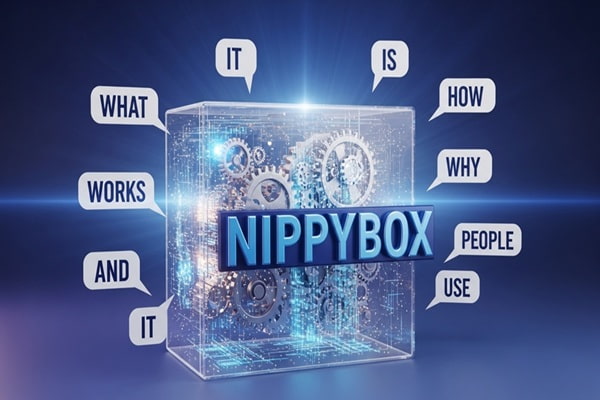In the hustle of today’s business world, efficiency isn’t just a buzzword—it’s a necessity. Whether you’re running a fast-growing startup or managing an established company, there’s one often-overlooked secret weapon that can completely transform the way your team operates: Standard Operating Procedures, or SOPs.
Now, don’t let the term scare you. Think of SOPs as clear, easy-to-follow playbooks that help your team stay on the same page, minimize confusion, and consistently get things done the right way. Whether you’re handling customer support, product development, or even making coffee in the breakroom—SOPs make everything smoother.
Let’s walk through what SOPs really are, why they matter, and how you can create your own without drowning in paperwork.
What Exactly is a Standard Operating Procedure (SOP)?
At its core, an SOP is a written document that lays out how to carry out a specific task or process, step by step. It’s not just a list of instructions—it’s your team’s guide to doing things the right way, every time.
These procedures are used in just about every industry you can think of—from healthcare and manufacturing to tech and hospitality. And they’re not only about doing things efficiently—they’re also about safety, compliance, and delivering consistent quality.
Why SOPs Are a Game-Changer for Any Business
Whether you’re in a five-person startup or a 500-employee enterprise, here’s why having solid SOPs is a no-brainer:
1. Consistency is Key
SOPs ensure that no matter who’s doing the job, it gets done the same way. This creates a reliable experience for both your customers and your team.
2. Onboarding Becomes a Breeze
New hires? No problem. With SOPs in place, training becomes faster, smoother, and more effective. Your team can hit the ground running without shadowing someone for weeks.
3. Fewer Mistakes, More Accountability
SOPs reduce errors by making it clear what’s expected. And when things do go wrong, it’s easier to pinpoint why and fix it fast.
4. Better Communication and Clarity
Everyone knows their role. No more “I thought you were doing that!” or “How do we handle this again?”
5. Time-Saving Superpower
Reinventing the wheel every time a task pops up? Not anymore. SOPs streamline repeat processes and save you hours in the long run.
6. Regulatory Compliance Made Simple
For industries like healthcare, food service, or finance, SOPs help you meet legal and safety requirements without missing a beat.
7. Improved Customer Experience
A consistent process leads to consistent service, which builds trust. And trust keeps customers coming back.
Where SOPs Shine: Examples Across Industries
-
Healthcare: Standardized procedures for administering medication ensure patient safety.
-
Manufacturing: Step-by-step processes help maintain product quality and reduce waste.
-
Hospitality: From guest check-in to room service protocols, SOPs create a seamless guest experience.
-
Technology: Development teams use SOPs for version control, QA testing, and deployment workflows.
How to Create a Clear and Effective SOP (Step-by-Step)
Creating an SOP might sound intimidating, but it doesn’t have to be. Here’s a simple process to get you started:
1. Identify the Process
Choose a task that’s repeated often and needs consistency. This could be anything from onboarding new clients to running payroll.
2. Define the Purpose
Why does this SOP exist? What’s the outcome you want to achieve? Start with a brief intro that spells it out.
3. Outline the Scope
Clarify where this SOP applies. Is it for a specific department? A certain role?
4. Assign Responsibilities
Who does what? Break down the roles clearly so there’s no confusion.
5. Break It Down Step-by-Step
List out each action in the order it should happen. Use bullet points, short paragraphs, and clear language. Include visuals or flowcharts if it helps.
6. Include Any References
Add links or mention supporting documents, tools, or compliance rules that team members should know about.
7. Get Input and Review
Ask the people who actually do the task to test the SOP. They’ll spot missing steps or unclear instructions.
8. Train and Distribute
Once finalized, train your team on the new SOP. Make sure they know where to find it when they need it.
9. Set a Review Schedule
Processes change. Review your SOPs regularly to keep them fresh and relevant.
Also Read : Ashcroft Capital Lawsuit: Key Details and Updates You Should Know
Anatomy of a Great SOP
To recap, every strong SOP includes the following key parts:
-
Purpose: Why this procedure exists
-
Scope: Where and how it applies
-
Responsibilities: Who’s doing what
-
Procedures: The step-by-step guide
-
References: Any supporting info or documents
How to Keep SOPs Alive and Useful
Too many businesses create SOPs, tuck them into a shared drive, and forget they exist. Don’t fall into that trap. Here’s how to make sure your SOPs stay useful:
-
Train New Employees using the SOP as part of onboarding.
-
Use It Daily: Encourage the team to refer to SOPs regularly.
-
Collect Feedback: Ask your team what works and what doesn’t.
-
Update Regularly: Set a schedule (every 6–12 months) for reviewing and revising SOPs.
Mistakes to Avoid When Writing SOPs
Here are a few pitfalls to steer clear of:
-
Being too vague: If your team has to guess what to do, the SOP failed.
-
Using jargon: Write in plain, everyday language.
-
Making it too long: Get to the point. Break big processes into smaller SOPs if needed.
-
Ignoring feedback: Your frontline workers know what’s practical. Listen to them.
-
Letting SOPs collect dust: Keep them updated and accessible.
Final Thoughts: Why SOPs Are Worth Your Time
At first glance, writing SOPs might seem like extra work—but trust me, it’s an investment that pays off big. With clear, consistent procedures in place, your business runs more smoothly, your team feels more confident, and your customers notice the difference.
Whether you’re looking to scale your operations, reduce errors, or just bring some sanity to your daily workflow, implementing SOPs is one of the smartest moves you can make.
Start small—pick one task, write it out, and build from there. Before you know it, you’ll have a library of streamlined processes that power your business forward.
FAQs About SOPs
What’s the main purpose of an SOP?
To create consistency, reduce errors, and provide clear guidance on how to complete tasks within your organization.
Can small businesses benefit from SOPs too?
Absolutely. Even a team of two can avoid miscommunication and save time by documenting their core processes.
How often should SOPs be updated?
Ideally, every 6 to 12 months—or whenever a key process changes.
Do SOPs have to be super formal?
Nope. What matters is that they’re clear, practical, and easy to follow.
Who should write the SOPs?
The best SOPs are written with the input of the people who actually perform the tasks.












Leave a Reply